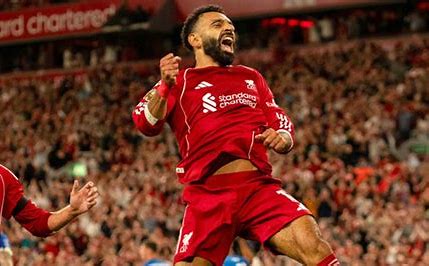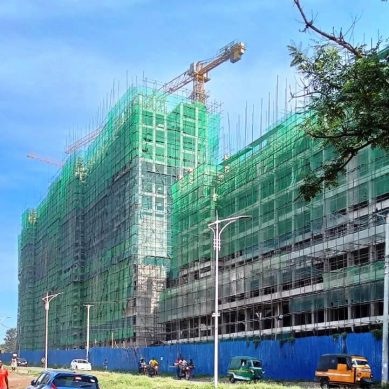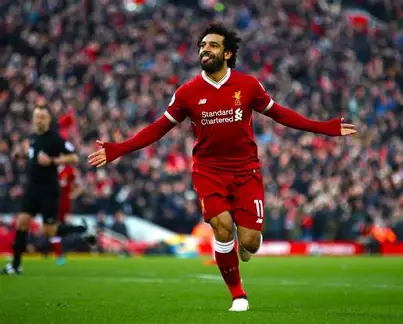
A few months before his 30th birthday, Mohamed Salah was asked in an interview how he felt about reaching an age when most footballers are typically considered to be past their peak.
“I didn’t think about the fact I’m going to turn 30,” he told Four Four Two magazine. “I ask some players and they say it’s a different feeling when you turn 30, but I’m feeling fine. I’m enjoying life, I’m enjoying football – it doesn’t matter how old you are now.”
For most of last season, the Premier League’s top scorer (29 goals) and provider of most assists (18) proved his point. He turned 33 in June, but Salah’s performances were crucial in propelling Liverpool to the title.
Those displays earned Salah a new two-year contract – despite Liverpool owners Fenway Sports Group’s reluctance to hand out large deals of over 12 months to players in their thirties – and the unstinting respect of his peers. Four days after scoring his first goal of the 2025-26 season against Bournemouth, he became the first three-time winner of the Professional Footballers’ Association Players’ Player of the Year award – the trophy voted for by players in England.
“What Mo is doing season in, season out is ridiculous. It’s mind-blowing,” said Daniel Sturridge, once a team-mate of Salah’s, on Sky Sports. Former Liverpool defender Jamie Carragher called it an “all-time season”, placing Salah behind only Thierry Henry for Premier League attackers.
At an age when most top players are starting to show signs of declining, how is it that Salah has put his foot on the gas and accelerated into a whole new dimension?
At Roma, where he signed permanently from Chelsea in 2016 after impressing on loan, Salah began to refine the preparation and recovery regimen that has become central to his success.
In a 2022 interview with L’Equipe, he said it was in Italy that he began “looking for those details” that would help him “recover well and feel toned match after a match”. He bought cardio and weights machines and built a private practice pitch in his garden where he could work on his shooting with a coach.
In the book Chasing Salah, author Simon Hughes details a gruelling pre-season training camp in Evian, southern France, run by Liverpool manager Jurgen Klopp in 2018. While club masseurs and physios were kept busy dealing with his team-mates’ pulls and strains, Salah’s only demands were around preparation and ensuring his body was ready for whatever Klopp had to throw at him the following day. In Hughes’ book, someone who had worked with Salah on his recovery says he is “a machine… a freak”.
Although the players had three training sessions per day to complete in Evian, Salah would start and end with visits to the gym, building on a habit he had started at Chelsea. Salah had been a gym user since his teenage years but at Chelsea it became something of a sanctuary as well as a place to make improvements: “I used to go every day because I knew I would not play,” he told GQ magazine in 2022. He also felt many of his team-mates at the club were bigger than him and that his speed would need to be supplemented by more strength if he was to survive in the Premier League.
By the time Salah returned to England in 2017, gym work was fully ingrained in his life, inside and outside the club environment. In Chasing Salah, Hughes writes that while other players arriving early at Liverpool’s headquarters would fill time before training by playing pool, Salah was in the gym, working on his abdominal and rotational strength.
Although his visible abdominal muscles might be the aspect of his physique considered most impressive (especially by those of us who’ve never seen one ab, never mind six), they are largely a by-product of good nutrition and his genetics. It is the deeper core stability and ability to twist his body as he moves at speed that is more important.
“He’ll be working on rotational strength because he will have identified it as something important to his game”, says Dr Ben Rosenblatt, who spent seven years as England men’s lead physical performance coach before launching 292 Performance, providing “high performers” with their own support team. “For Salah, that’s holding players off and manoeuvring between small spaces.”
Allied to this performance aspect, Rosenblatt says Salah’s focus on rotational strength is likely based on the knowledge he has garnered about his own body and what it needs to remain resilient to the demands of elite football.
“There might be something within his injury history that says to him, ‘I need to have a really strong trunk and be really powerful in rotational domains’,” Rosenblatt adds. “He’s identified something important both to his game and to his injury history that he consistently commits work to. That’s one of the keys to keeping players robust and resilient later into their career.”
Outside of the training ground, Salah remains devoted to doing the work. Two rooms of the house he shares with wife Magi and their two daughters, Makka and Kayan, are filled with gym equipment, including free weights, a treadmill, an exercise bike, a small Pilates reformer machine and fixed resistance machines.
He has the facility to do cryotherapy – extreme cold therapy at temperatures below minus 80C (-12F) – which can accelerate muscle recovery after exercise by reducing soreness and inflammation. There is also a hyperbaric chamber in which he can breathe pure oxygen at an air pressure two or three times higher than normal, potentially promoting muscle recovery and endurance, according to some studies.
Salah has joked that his house looks more like a hospital. Once his children are in bed, he often heads to his home gym to work on something specific, such as flexibility or mobility. “My wife says I spend more time with my machines than with her,” he told L’Equipe.
It clearly works. Salah started all of Liverpool’s Premier League games last season and that’s not unusual for him. Until the hamstring tear he picked up on Africa Cup of Nations duty in January 2024, he had missed just 10 Premier League games across six and a half seasons at Anfield – a remarkable record for a player who is invariably on the receiving end of some robust attention from opposition defenders.
Various factors, including genetics, play a role, says Luke Anthony, the clinical director at sports-injury centre GoPerform who has worked with clubs including Watford, Reading and Norwich City. “We know that with some injuries, like anterior cruciate ligament injuries, there seems to be a certain predisposition for people to have that type of injury.”
Injury history is another big determinant of a player’s future robustness. “So once you’ve had one injury, whether it be a hamstring, thigh or knee injury, you are more likely to have that injury again compared to someone who hasn’t had that injury”, says Anthony. “If you pick up injuries in the early part of your career, it might heal well, but you carry that injury risk on your profile going forward.”
There is also an element of luck and circumstance involved, including the day-to-day component of what happens at a club and how a manager manages training loads.
Salah is also a Pilate’s devotee, and has stationed a Pilate’s reformer among the squat rack, weight stacks and treadmill in his home gym. “When you’re playing any sport, it takes movement away from you,” explains Rosenblatt. “A footballer might lose range around their ankle, hip or thoracic spine (the middle section) and Pilates will help restore that.”
A reformer machine also challenges the body in ways it is not accustomed to, so requires very high levels of self-awareness in the body to complete it well.
“There’s an opportunity there to check in with your body and work out what’s feeling tight, where you’ve lost motion or where you might need more support,” says Rosenblatt. “You also need extreme levels of precision and body control to do that type of work well. That level of body control and awareness is really important for any athlete, especially one who is trying to sustain their career.”
Alongside Pilates, Salah also practises yoga. After scoring against Chelsea during the 2018-19 season, he celebrated by executing “tree pose” (standing on one leg with the sole of the other foot placed on the inner thigh of the standing leg and raising your arms overhead), which requires excellent balance, focus and stability.
“I am a yoga man!” Salah exclaimed during a post-match interview, adding his name to a growing list of players who extol the virtues of the discipline for helping improve flexibility and core strength, both of which are important in protecting against injuries.
It has also helped Salah control his mental and emotional state. In yoga routines, focus is often placed on the breath and the ability to breathe from the stomach rather than the chest, helping calm the nervous system.
Rosenblatt introduced breathwork to the England team in 2020 after seeing how drained the players were following a penalty shootout victory over Colombia in the last 16 of the 2018 World Cup. “Everyone was smashed,” he recalls, “not necessarily physically. I’d never really seen it before but emotionally, psychologically, they were completely gone.
“We recognised that if we wanted to take the next step, which was something we’d have to recover from. If you want to be successful, the demands are only going to keep on increasing and there’s only so much you can do to condition them for that. You have to offset it in some way, shape or form.”
Breathwork can help stimulate the parasympathetic nervous system, providing an essential counterbalance to the sympathetic nervous system (your fight or flight response) in which players can too often find themselves as they constantly push to perform at their best.
“Emotional regulation and management are critical for anyone, let alone someone trying to perform under extreme levels of pressure repeatedly,” says Rosenblatt.
- A Tell Media / Adapted from The Athletic







